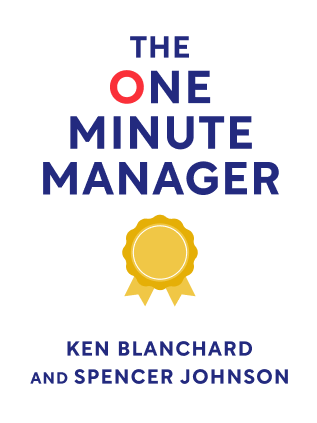

This article is an excerpt from the Shortform book guide to "The One-Minute Manager" by Ken Blanchard and Spencer Johnson. Shortform has the world's best summaries and analyses of books you should be reading.
Like this article? Sign up for a free trial here .
What are one-minute goals? How do you set them? Why do one-minute goals work?
If you want to learn how to be a one-minute manager, then you need to learn about one-minute goals. Each goal you set should be readable in one minute or less, hence the name. When you have these written performance standards and deadlines, employees feel more driven and have direction.
Here’s why you should set one-minute goals for your employees and why they work.
What Are One-Minute Goals?
One-minute goals are the foundation of the one-minute manager philosophy. They set the tone for all subsequent interactions between the manager and the employee, because they are the gold standard against which all of the employee’s subsequent feedback (both positive and negative) will be held. Anything that is measurable, has a clear standard of success or failure, and that has a deadline, can be defined as a goal.
Setting One-Minute Goals
At the beginning of a new task or responsibility, you sit down with your employee to come up with specific goals related to that task. Each goal and its performance standard should be defined in no more than 250 words, making it readable in one minute or less.
Goals should be clear and define what constitutes success or failure. Deadlines are an important part of this definition, putting everyone on the same page about when items are due. These written performance standards allow you as the one-minute manager to determine whether or not your employee has lived up to her goals.
Once agreed on, the employee follows up regularly regarding the goals:
- She emails the goals to you after the meeting.
- She checks her work against her goals periodically (even daily) to see if she’s on the path to achieving them.
- You as the manager also require her to submit regular reports of her progress.
How Many Goals to Have?
The 80/20 rule (also known as the Pareto Principle) is a useful tool that will help you and your team avoid setting too many goals that are hard to keep track of. The 80/20 rule stipulates that 80 percent of the results come from 20 percent of the goals. Thus, you should rank the most important tasks to be accomplished in order of importance and design your employees’ goals to only focus on the first 20 percent of items on that list. This means that most goals will be fairly large and long-term.
This keeps the overall number of goals for each employee down to a manageable level, usually three to six goals total.
Why One-Minute Goals Work
What makes one-minute goals such an effective management tool?
Goals Define Success
They define what constitutes success and gives employees a target to drive toward. Many employees struggle because they don’t know what they’re supposed to be doing. This ambiguity around purpose is highly demotivating to employees. In this scenario, people get discouraged because there is no defined standard for success or failure, so any feedback they do receive seems arbitrary and capricious (especially if it’s negative).
With clearly defined goals, however, employees know exactly what to work on each day. They have an unambiguous idea of what success in their job means. Furthermore, they know how their work is contributing to the organization’s goals, which is motivating.
Goals Drive Accountability
One-minute goals enable accountability. It’s much harder for things to fall through the cracks,
because everything is clearly set down in writing and can be checked at any time through email. As a manager, you can better spot when there’s a gap between what’s supposed to be happening and what’s actually happening. Plus, your employees know exactly how they’re being measured and why they’re receiving the feedback you’re giving them. They don’t have to wait for annual performance reviews to know this, since you’re communicating with them on their progress on a regular basis (we’ll get into this latter point later in this summary).
(Shortform note: Today’s one-minute managers can also take advantage of many professional third-party project management tools. These let you organize goals into sub-tasks, view all of your team’s projects in a dashboard, and set automatic deadline reminders, among other features. These tools can be especially useful if you’re managing a large and cross-functional team.)
Goals Motivate Your Team
One-minute goals are powerful motivators. Employees are happier and more productive when they have clear, stated objectives. This is because you’re able to give them meaningful and task-specific feedback on the work they’re doing. They’re learning and getting better at their jobs, because you’re aligning their day-to-day work with longer-term goals: they’re not working in a vacuum.
Think about what happens when you don’t give your team goals. Without goals, people have little basis on which to judge their own performance. They instead resort to self-evaluating based on whether or not they’ve been disciplined (which is typically the only type of feedback they receive under this style of management). If your employees believe that simply not being criticized by you is indicative of good performance (“No news is good news”), then you’re too disengaged and not providing enough structure for them to succeed. This will only hurt you and your organization in the long-run.
Goals Make Micromanagement Unnecessary
One-minute goals free you and your employees from the dreaded micromanagement cycle. Fundamentally, micromanagers don’t trust their employees: that’s why they feel the need to scrutinize everything their team does. This wastes everyone’s time, decreases morale, and hurts productivity because your employees never learn how to do anything on their own.
One-minute goals establish that crucial foundation of trust right at the outset. You know your team is working on the right things, because you worked out the goals and performance standards with them directly.

———End of Preview———
Like what you just read? Read the rest of the world's best book summary and analysis of Ken Blanchard and Spencer Johnson's "The One-Minute Manager" at Shortform .
Here's what you'll find in our full The One-Minute Manager summary :
- How to empower your employees and teach them to succeed
- Why immediate and direct feedback is the most effective
- How to offer constructive criticism to correct behavior






